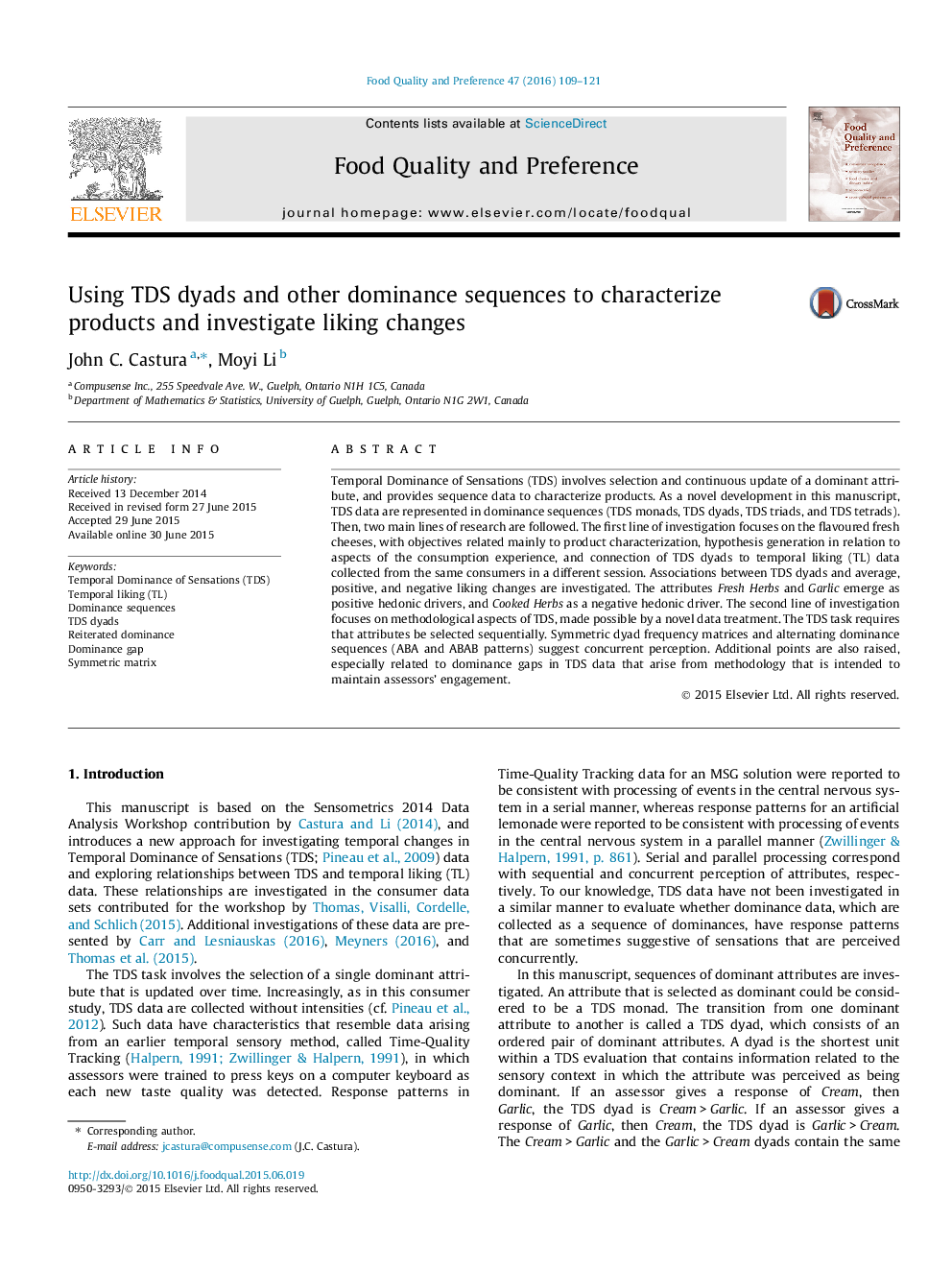| Article ID | Journal | Published Year | Pages | File Type |
|---|---|---|---|---|
| 6261414 | Food Quality and Preference | 2016 | 13 Pages |
â¢TDS data are arranged in dominance sequences.â¢TDS sequences (monads, dyads, triads, tetrads) are used to characterize products.â¢TDS and temporal liking data are linked and hedonic drivers identified.â¢TDS sequence data suggest the possibility of concurrent attribute perception.â¢Methodological aspects of TDS are discussed.
Temporal Dominance of Sensations (TDS) involves selection and continuous update of a dominant attribute, and provides sequence data to characterize products. As a novel development in this manuscript, TDS data are represented in dominance sequences (TDS monads, TDS dyads, TDS triads, and TDS tetrads). Then, two main lines of research are followed. The first line of investigation focuses on the flavoured fresh cheeses, with objectives related mainly to product characterization, hypothesis generation in relation to aspects of the consumption experience, and connection of TDS dyads to temporal liking (TL) data collected from the same consumers in a different session. Associations between TDS dyads and average, positive, and negative liking changes are investigated. The attributes Fresh Herbs and Garlic emerge as positive hedonic drivers, and Cooked Herbs as a negative hedonic driver. The second line of investigation focuses on methodological aspects of TDS, made possible by a novel data treatment. The TDS task requires that attributes be selected sequentially. Symmetric dyad frequency matrices and alternating dominance sequences (ABA and ABAB patterns) suggest concurrent perception. Additional points are also raised, especially related to dominance gaps in TDS data that arise from methodology that is intended to maintain assessors' engagement.
